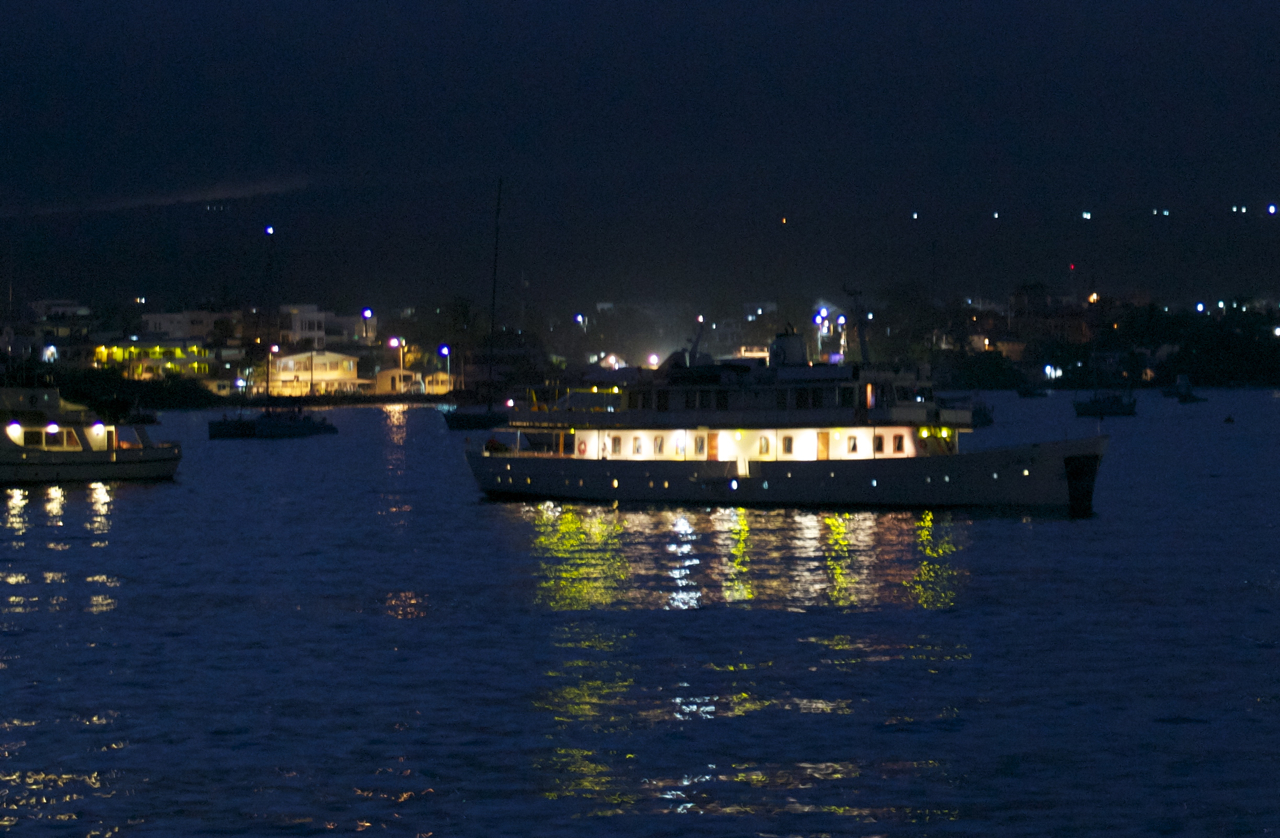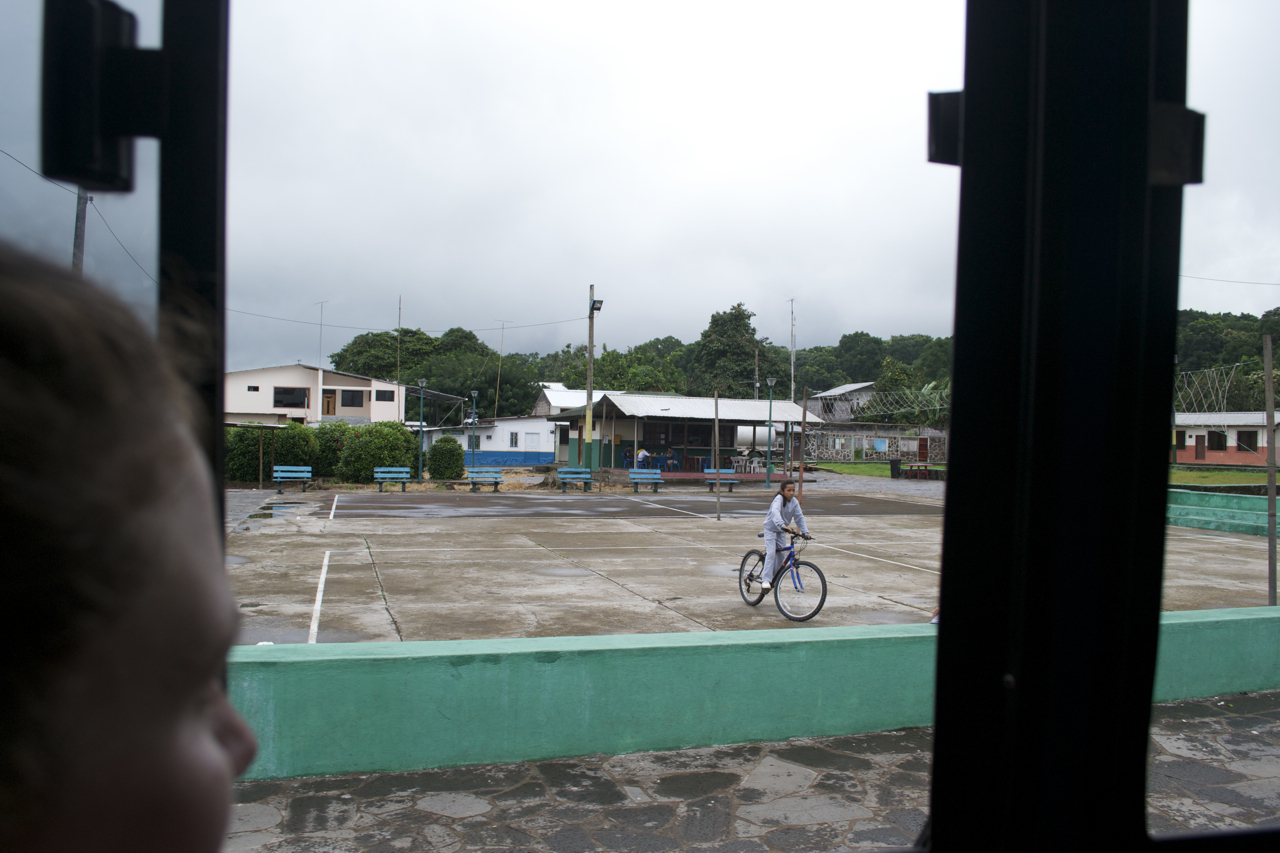
This is the last installment of my six-week series about the Galápagos Islands. To recap the first five posts: The Galápagos is an archipelago of 14 volcanic islands that scientists since Darwin have gone well out of their way to study. The islands are extremely inhospitable to life, and yet, over long periods of time, life has found a way. Humans are capable of disturbing that ecosystem, but equally capable of restoring it. It’s this last point, the People Problem, that most interests me.
Since around 1980, the number of tourists on the Galápagos has shot up. With tourism came economic growth, which meant increases in the resident population (on the five islands that are allowed to have residents, that is). See here:

According to the 2006 census, only about one-fifth of the workforce on the Galápagos was born there. The rest migrated from mainland Equador in search of stable jobs. (Ecuador is not in great economic shape, to say the least.) Those jobs exist because of tourists: Two-thirds of the jobs on the islands are in the service sector. The tourists come, of course, because of the amazing plants and animals. They contribute money directly to conservation efforts, and their patronage boots the economy and allows the government to set up its own conservation management systems. That’s all great, except — more people also means more: ships, construction, roads, vehicles, hotels, restaurants, water and energy use, garbage, and sewage. All of that threatens the habitats and health of the plants and animals.
In other words, the whole thing is unsustainable. The growing economy in the Galápagos is simultaneously supporting more science and conservation efforts and destroying the things that need to be studied and conserved. The economy is eating itself.
People have proposed solutions to the People Problem, so many solutions and recommendations and treaties from different levels of local and national and international government and non-profit organizations that it’s hard to tell what’s actually current and binding. For example, since 2009, in trying to limit population growth, the government has booted thousands of poor Ecuadoreans out of Puerto Ayora, the islands’ economic hub. This is ethically troubling. As one migrant worker told the New York Times: “We are being told that a tortoise for a rich foreigner to photograph is worth more than an Ecuadorean citizen.” And yet, you could argue that without those tortoises and tourists, there wouldn’t be a booming economy for the Ecuadoreans to benefit from.

My tour guides in the Galápagos were pretty riled up about another recent policy change. A few years ago, the powers that be decided that all tour guides on the islands must be born in the Galápagos (though this doesn’t apply to guides who were registered before the law went into effect). All of our guides were amazingly credentialed, with Master’s or even doctorates in biology, conservation and related fields. But none of our guides were originally from the Galápagos. The intent behind the new policy is to give these highly respected and high-paying jobs to natives, in order to boost the local economy. But from our guides’ perspective, the rule isn’t sustainable. The educational system on the Galápagos is pretty bad at all levels, but particularly for higher education. So there is no infrastructure in place that would allow Galápagos natives to be fully trained in biology and conservation principles. And when guides aren’t properly trained, they’re less likely to follow the many regulations imposed on tourists, such as not eating on the islands, not walking in groups of more than 16, and not trampling all over sea turtle nests. My guides were convinced that this seemingly minor law would have major negative consequences in the decades to come.
In trying to make sense of the People Problem, I’ve been wading through a bunch of white papers written by smart and well-intentioned economists, scientists, lawyers and policy-makers*. They tend to give a lot of lip service to “sustainable” solutions, but from what I can tell, nothing that’s been proposed is truly sustainable in the long term. Is it ever possible, really, to square conservation of nature with economic development, or is one always going to suffer in service of the other? I suspect this is a perennial question in conservation circles, but I never really paid it much attention before I saw the problem for myself. When I left the Galápagos, it was with a sad and cynical feeling that the natural treasures I witnessed would inevitably disappear, if not in 20 years then in 50 or 100. I hope I’m wrong about that, and I suppose that’s why I wrote this series.
*
A few excellent resources:
United Nations/World Heritage Committee Mission Report, Galápagos, 2010
The Galápagos Report: 2009-2010, by the Galápagos Conservancy
An inconvenient truth and some uncomfortable decisions concerning tourism in Galápagos, 2008
To protect Galápagos, Ecuador Limits a Two-Legged Species, New York Times, 2009
Pictures by Randal Vegter, my favorite photojournalist
6 thoughts on “Galápagos Monday: The People Problem”
Comments are closed.